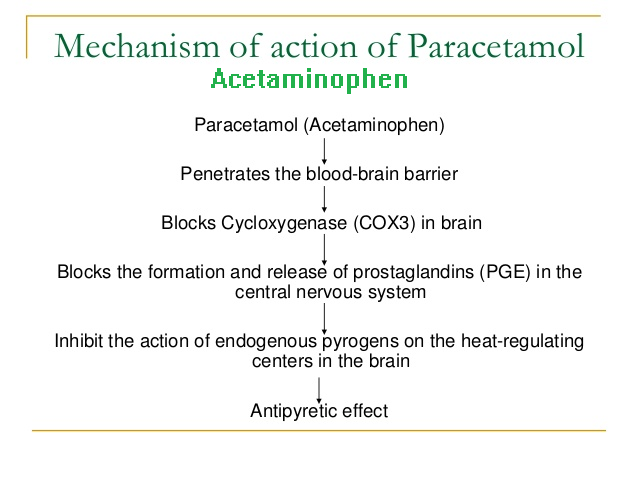Acetaminophen, also known as paracetamol, is a widely used over-the-counter pain reliever and fever reducer. While its exact mechanism of action is not fully understood, it is believed to primarily exert its effects through modulation of the endocannabinoid system and inhibition of the cyclooxygenase (COX) enzyme.
- Endocannabinoid System Modulation: Acetaminophen has been shown to increase levels of endocannabinoids, which are naturally occurring compounds in the body that activate cannabinoid receptors. By enhancing the activity of endocannabinoids, acetaminophen may indirectly reduce pain and inflammation.
- Inhibition of Cyclooxygenase (COX) Enzyme: Acetaminophen inhibits the activity of the COX enzyme, which is responsible for the production of prostaglandins. Prostaglandins are lipid compounds that play a key role in inflammation, pain, and fever. By blocking COX activity, acetaminophen reduces the production of prostaglandins, leading to pain relief and fever reduction.
It’s important to note that unlike nonsteroidal anti-inflammatory drugs (NSAIDs) such as ibuprofen or aspirin, acetaminophen has minimal anti-inflammatory effects. Instead, its primary actions are analgesic (pain-relieving) and antipyretic (fever-reducing).
Acetaminophen is thought to primarily act centrally within the brain and spinal cord to produce its effects, rather than exerting a significant peripheral anti-inflammatory action like NSAIDs.
While acetaminophen is generally considered safe when used as directed, taking excessive doses can lead to liver toxicity and other adverse effects. It’s crucial to follow the recommended dosage instructions and consult with a healthcare professional if you have any questions or concerns about acetaminophen use.
Paracetamol
Paracetamol (acetaminophen) is generally considered to be a weak inhibitor of the synthesis of prostaglandins (PGs). However, the in vivo effects of paracetamol are similar to those of the selective cyclooxygenase-2 (COX-2) inhibitors. Paracetamol also decreases PG concentrations in vivo, but, unlike the selective COX-2 inhibitors, paracetamol does not suppress the inflammation of rheumatoid arthritis.
It does, however, decrease swelling after oral surgery in humans and suppresses inflammation in rats and mice. Paracetamol is a weak inhibitor of PG synthesis of COX-1 and COX-2 in broken cell systems, but, by contrast, therapeutic concentrations of paracetamol inhibit PG synthesis in intact cells in vitro when the levels of the substrate arachidonic acid are low (less than about 5 mumol/L).

When the levels of arachidonic acid are low, PGs are synthesized largely by COX-2 in cells that contain both COX-1 and COX-2. Thus, the apparent selectivity of paracetamol may be due to inhibition of COX-2-dependent pathways that are proceeding at low rates.
This hypothesis is consistent with the similar pharmacological effects of paracetamol and the selective COX-2 inhibitors. COX-3, a splice variant of COX-1, has been suggested to be the site of action of paracetamol, but genomic and kinetic analysis indicates that this selective interaction is unlikely to be clinically relevant.
There is considerable evidence that the analgesic effect of paracetamol is central and is due to activation of descending serotonergic pathways, but its primary site of action may still be inhibition of PG synthesis.
The action of paracetamol at a molecular level is unclear but could be related to the production of reactive metabolites by the peroxidase function of COX-2, which could deplete glutathione, a cofactor of enzymes such as PGE synthase.